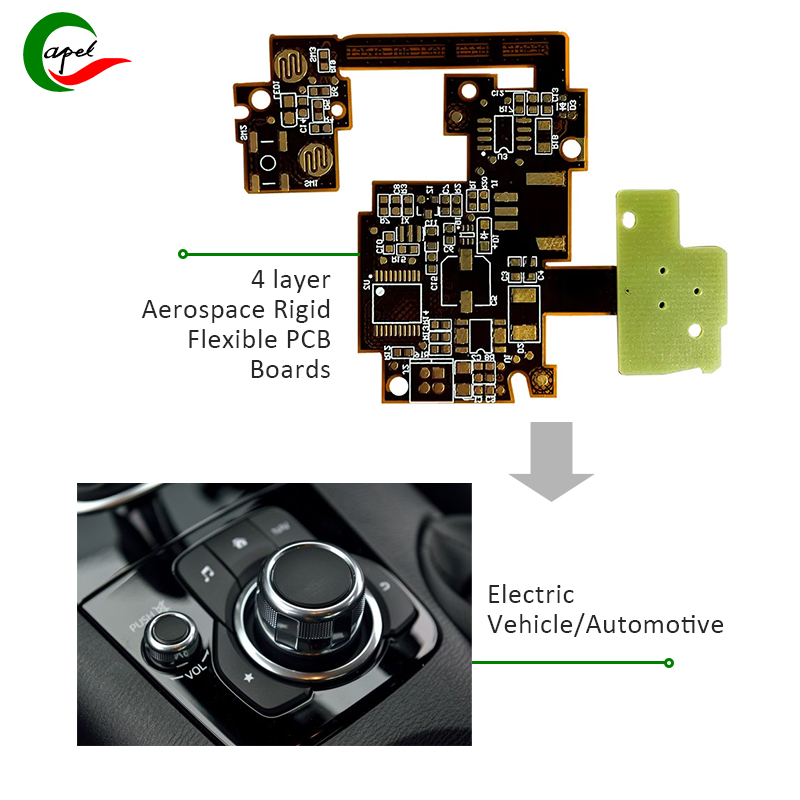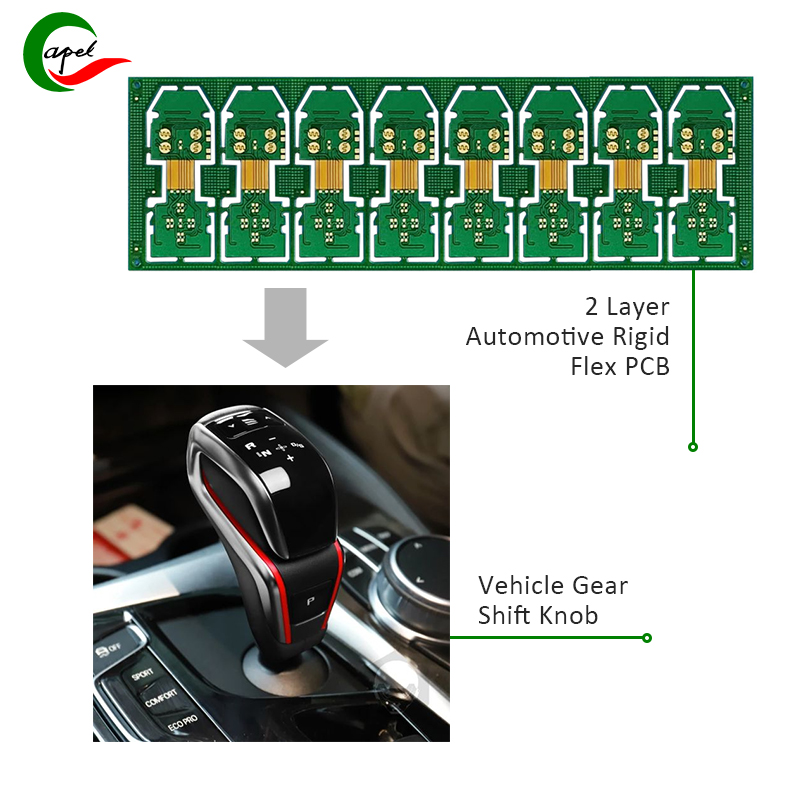Explore the complexities of flexible PCB prototyping and manufacturing for automotive applications with a case study of a 2-layer flexible printed circuit designed for an automotive shift knob. Delve into the challenges, materials, and industry expertise driving automotive applications. Automotive FPC manufacturing
Introduction: FPC Flexible PCB Advances in Automotive Electronics
With the continuous advancement of technology, the automotive industry is witnessing rapid development in the integration of electronic components. From advanced driver assistance systems to smart infotainment systems, demand for flexible, high-precision printed circuit boards (PCBs) is surging. In this case study, we delve into the complexities of prototyping and manufacturing flexible PCBs specifically for automotive applications, focusing on producing a stiff 2-layer flexible printed circuit specifically designed for automotive shift knobs.
Understand Automotive FPC Flexible PCB Requirements
This product is a 2-layer flexible printed circuit with specific design and material requirements tailored for automotive applications. The main specifications include line width, spacing 0.15mm/0.1mm, plate thickness FPC=0.15mm T=1.15mm, copper thickness 1oz, and film thickness 27.5um. The surface treatment is ENIG, the thickness is 2-3uin, and the board has a strict tolerance requirement of 0.075mm. Additionally, rigidity is achieved through TG150 epoxy sheets.
Challenges in Automotive Flexible PCB Manufacturing
The automotive industry requires the highest levels of precision and reliability, making the manufacturing process of flexible PCBs for such applications inherently complex. Tight tolerance requirements require cutting-edge manufacturing techniques, while achieving the required stiffness while maintaining flexibility adds to the complexity of the production process.
Automotive FPC Prototyping and Testing
Prototyping plays a key role in the successful manufacturing of automotive FPCs. Prototyping is performed to validate designs, material selections, and manufacturing processes with specific product requirements in mind. Functional testing, including automated optical inspection (AOI), four-wire testing, continuity testing and copper sheet testing, is critical to ensure the final product meets the high-precision requirements of automotive applications.
Automotive Flexible PCB Materials and Manufacturing Techniques
The use of advanced materials such as TG150 epoxy sheet was critical to achieving the required stiffness while maintaining the flexibility required for shift knob operation. Material selection directly affects the mechanical and electrical properties of the flexible PCB, so materials that can withstand the harsh automotive environment must be used.
The manufacturing process involves complex techniques to achieve specified line width and spacing, copper thickness, and tight tolerance requirements. Cutting-edge manufacturing equipment and processes are used to ensure the highest precision in every step of production.
Flexible Printed Circuit Board Application in the Automotive Industry
The automotive industry presents unique challenges and opportunities for flexible PCB prototyping and manufacturing. The gear shift knob is a critical component of the car and requires a PCB that can withstand constant use, varying temperatures and mechanical stress. A 2-layer flexible printed circuit designed for this application demonstrates the adaptability and reliability of flexible PCBs in the automotive environment.
High-Precision Automotive PCB Manufacturing and Industry Expertise
With over 16 years of expertise in automotive flexible PCB prototyping and manufacturing, our company has honed its expertise in meeting the stringent needs of the automotive industry. Our success in delivering high-precision, reliable flexible PCBs for automotive applications demonstrates our commitment to quality and innovation.
Automotive Flexible PCB Fabrication Process
Conclusion
A case study of a stiff 2-layer flexible printed circuit designed for an automotive shift knob highlights the critical role of prototyping and high-precision manufacturing in automotive FPC production. Continuing developments in automotive technology will further drive demand for flexible, high-performance PCBs, and manufacturers must remain at the forefront of innovation to meet the industry’s evolving needs.
As automotive electronics technology continues to evolve, the need for specialized flexible PCBs will only continue to grow, providing exciting opportunities for prototyping and manufacturing companies to demonstrate their expertise in meeting the unique needs of the automotive industry.
Post time: Feb-28-2024
Back








